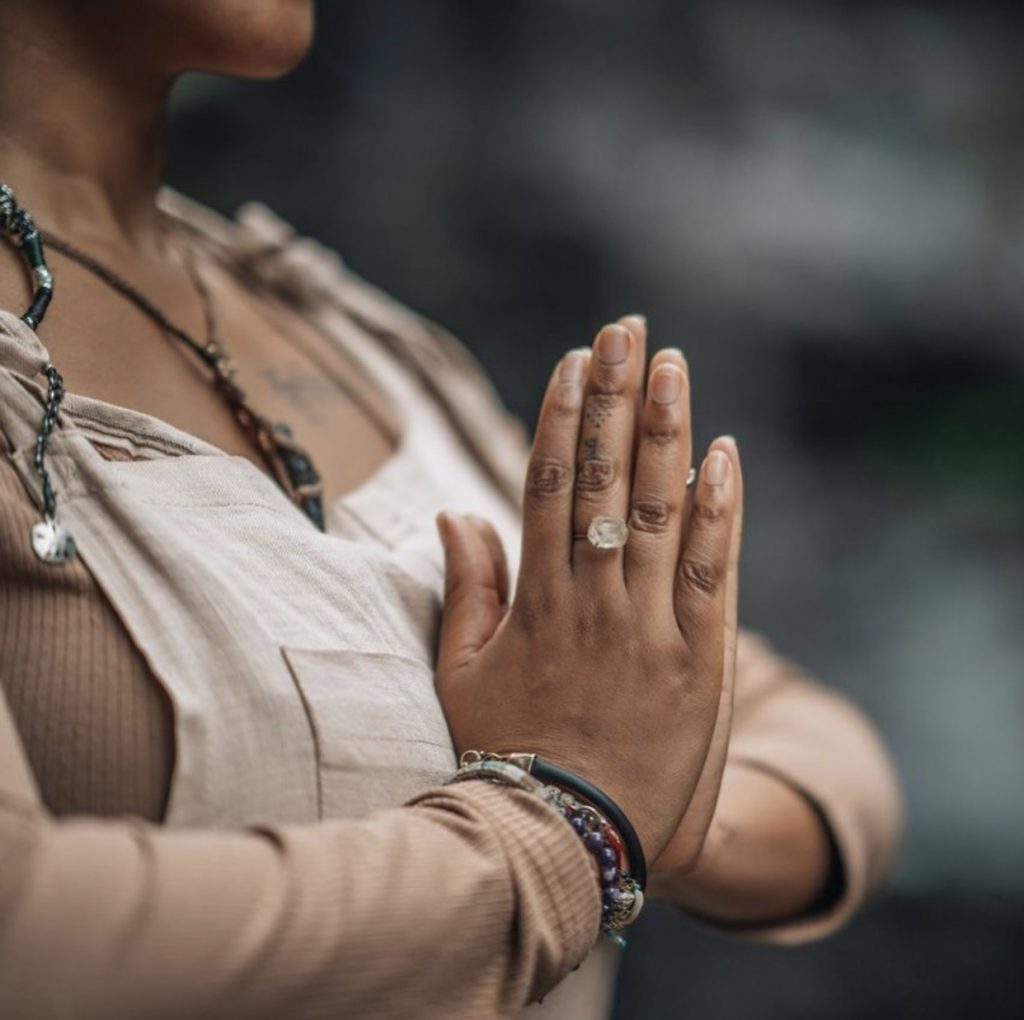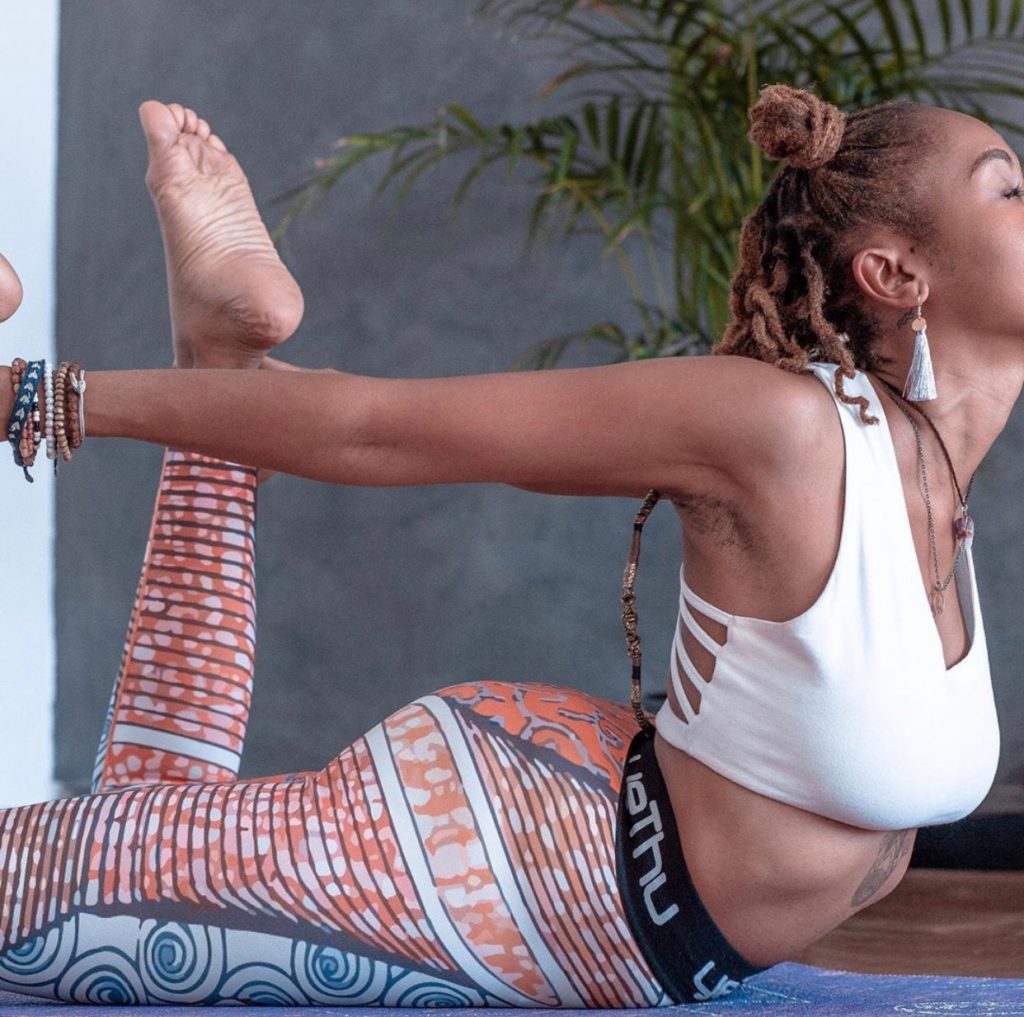Banesa Tseki. (Supplied by Banesa Tseki)
Humans have been questioning the purpose of their existence for thousands of years and digging for a deeper meaning to life. Often asking; Why am I here? How did I get here? What is my purpose?
It is said the need to connect to something bigger than ourselves is inside all of us and the need to make sense of the world is a continued yearning.
“Yoga is based on the philosophy that the spirit, the mind and the body are in union,” says Banesa Tseki, co-owner of the Yoga studio, The Nest Space in Greenside, Johannesburg.
Yoga has become a popular form of exercise around the world. Different people practise this art for different reasons, usually to promote endurance, strength, spiritual enlightenment, calmness, flexibility and general well-being.
The ultimate goal of yoga is developing a state of pure awareness called Moksha or Samadhi (from the Sanskrit that means to “free”). There are several types of yoga and many disciplines within the practice. Here, Tseki, a practising yoga instructor, gives us different types of yoga practices you can try.
Hatha
Hatha is usually the branch of yoga that comes to mind when you think of yoga. The word “ha” means sun, “ta” means moon. “Hatha” yoga brings the balance between the sun and the moon in you.
Just like the sun brings energy to the day and the moon brings the quiet in the night, Hatha yoga balances the energy in our body. “Ha” represents the stimulating, vibrant and strong energy, but because we can burn out if we’re always exerting effort, we need to also connect to our “tha” which is the quiet, receptive, nurturing introspective and restorative energy. Hatha yoga focuses on restoring the balance between the two energies.
Kemetic
“Yoga is least popular among black people, that’s why we have created a yoga space for black people by black people,” says Tseki.
You might be surprised, but some yoga researchers have found evidence suggesting that certain practices of yoga have roots in parts of Africa. Kemetic Yoga originates in Egypt and it focuses on the movement of energy in the body to connect a person to their higher intelligence and higher self. It is practised at a much slower pace than most types of yoga as it focuses more on meditation and the flow of energy.

Vinyasa
The philosophy of Vinyasa recognises that things are temporary and may change at any given moment. It is a breath-initiated practice that connects every action of our life with the intention of moving toward what we want and what is most important to us. The variable nature of Vinyasa yoga helps to develop a more balanced body as well as prevent repetitive motion. “This style of yoga is characterised by creating a flow of postures so that you seamlessly move from one position to another focusing on your breathing,” Tseki explains.
Ashtanga
Ashtanga yoga is regarded as one of the hardest and most athletic types of yoga. For yoga newbies, this can seem utterly intimidating and defeating. Similar to the Vinyasa, Ashtanga yoga involves poses that flow from one to the next. However, Ashtanga uses a combination of intense movements that help stabilise your mind and mood. People who practise Ashtanga are advised to practise six days a week.

What beginners need to know
“Everyone can practise yoga, regardless of age, religion, or gender. This is a self-wellness practice and all that matters is you and your emotional, spiritual and physical well-being. Men should not be shy to try it,” says Tseki.
The truth is, yoga can work for everyone. It can help you gain strength and flexibility. It’s also a great way to quiet the mind and manifest an overall happier and more peaceful existence. Even if you haven’t been active in a while or have certain health conditions like arthritis, high blood pressure, or even depression, there is a yoga practice that fits your needs.
Preparing for your first yoga class
Your first class is usually a short and straightforward yoga session that might over time build up to more complex types of yoga if that’s what you want. Typically, yoga is practised barefoot, on a yoga mat. The yoga movements and poses require clothes that can stretch and move freely with your body. You may use additional props such as straps, blocks, and bolsters. You usually don’t need these in your first class. Like any other practice, it’s always nicer to have a trainer you find relatable. The first step is to find a studio or a trainer who understands your health, body, and mental needs. The 21st June is International Day of Yoga and if you would like to tap into this day by exploring the art of yoga, check out The Nest Space, a yoga studio in Greenside Johannesburg.